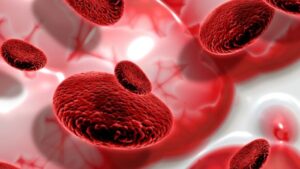
Look, all ambulances are the same by means of providing an on-the-spot treatment but their features and role may differ. When you talk about Road Ambulance services in Panchkula and Air Ambulance services in Panchkula then you might see that both the ambulances are doing the same job, but Road Ambulance services in Panchkula treat the patients until they reach the nearby hospital.
While on the other hand, Air Ambulance services in Panchkula transfer patients from one city to another for the proper medication and treatment. So people can choose ambulance services in Panchkula according to their condition and needs.
1. Timely Medical Assistance
In an emergency, ambulance services guarantee that patients receive prompt medical attention. They have the necessary medical supplies on hand and are manned by qualified experts who can evaluate and stabilise patients’ conditions on the way to the hospital, possibly saving lives and achieving better results.
2. Quick Response and Transportation
Rapid response to medical emergencies is the aim of ambulance services. In an emergency, such as a heart attack or stroke, they enable patients to be swiftly transferred to medical facilities, cutting down on waiting times and providing access to state-of-the-art care.
3. On-Site Medical Care
Ambulance services are extremely important in aiding people since they provide on-site medical care during crises. Before patients arrive at the hospital, paramedics and emergency medical technicians are capable of stabilising patients through life-saving actions and the administration of required therapies.
4. Accessibility to Remote Areas
To provide remote and rural communities with access to healthcare, ambulance services are essential. They act as a link between remote areas and medical institutions, making it possible for people who live in difficult-to-reach places to get emergency care.
5. Emergency Preparedness
The ability of ambulance services to quickly respond to a variety of catastrophes, such as accidents, natural disasters, and mass casualty events, improves a community’s emergency readiness. They are a crucial component of the public health system, prepared to offer emergency medical care.
6. Transportation of Critically Ill Patients
Critically sick patients who need round-the-clock medical attention and monitoring must be transported by ambulance. They guarantee that patients can receive specialised care and therapies that might not be offered locally by facilitating transfers between healthcare facilities.
7. Support for Medical Procedures
Medical treatments that necessitate transportation, such as organ transplants or patient transfers for specialised surgery, are frequently supported by ambulance services.
8. Specialized Services for Specific Needs
For patients with specific medical needs, certain ambulance services provide speciality services like neonatal or bariatric transport. These specialised ambulances are equipped with the personnel and tools required to cater to the specific requirements of these patient groups.
9. Efficient Use of Healthcare Resources
By evaluating and prioritising patients on the spot, ambulance services help ensure that healthcare resources are used as efficiently as possible. By ensuring that patients receive the best possible care, they contribute to the reduction of emergency room crowding.
10. Coordination with Other Emergency Services
To guarantee a coordinated response to crises, ambulance services collaborate closely with other emergency services, including the police and fire departments. Through this partnership, patient outcomes are improved and emergency management is made more effective.







